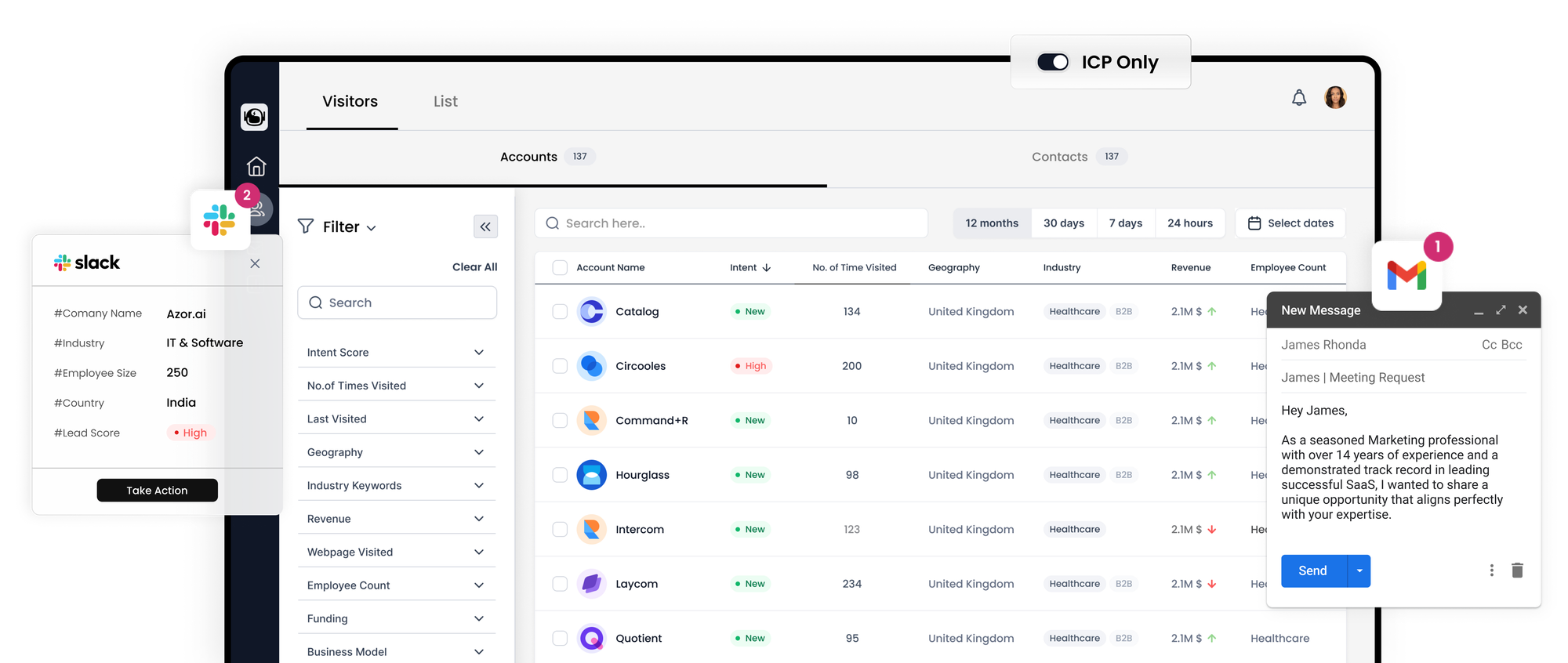B2B Sales: Mastering Modern Sales Approaches In The Digital Age

Understanding B2B Sales
Business-to-Business (B2B) sales are transactions between enterprises, as opposed to transactions with individual consumers (B2C). Typically, B2B sales involve higher value orders, extended sales cycles, and a complex nature due to the scale and intricacy of business needs.
The B2B sales landscape has undergone a significant transformation, rendering traditional sales methods less effective.

The Evolution of B2B Sales
In the past, B2B sales were straightforward: a buyer sought a vendor, interacted with a salesperson, and if the pitch resonated, a purchase ensued. Marketing's role was lead generation, while sales teams nurtured and converted these leads.
This predictable model is now obsolete.
The Modern B2B Buyer's Journey:
Today’s B2B buyer embarks on a more autonomous journey:
Problem identification happens internally, initiating research.
Extensive online exploration follows, evaluating possible solutions.
Buyers seek recommendations, tapping into their networks and social platforms.
Online reviews and vendor content, including ads, are scrutinized.
Decision-making is informed by a blend of digital insights and peer feedback.
Only at the decision's brink might a buyer engage with a company’s sales team.
The New Path to Purchase
The once linear purchase funnel has become complex and personalized. Buyers armed with digital tools and information carve their unique paths, rendering traditional marketing models obsolete. The priority is no longer simply generating leads, but facilitating a buyer's self-guided journey until they are ready for sales engagement.
The Shifting Roles in Sales and Marketing
With buyers self-educating through the initial sales stages, marketing teams have assumed responsibilities once held by sales. Consequently, sales roles have evolved to focus on the later stages, helping buyers evaluate options and execute purchases.
Challenges Facing B2B Sales Teams
Adjusting to a landscape where buyers are more informed and autonomous is challenging. Sales teams must adapt to a reduced, yet crucial, role in the buyer's journey, providing expert assistance and validation in the decision-making phase.
THE MODERN B2B BUYER: AN EVOLVED PROFILE
Shifts in Buyer Preferences
Today's B2B buyers are reshaping the sales landscape with their evolving expectations for autonomy and digital fluency. The demand for self-service avenues and online interactions with sellers is on the rise, while traditional marketing methods witness a decline in responsiveness. Data privacy and security have also become significant concerns for these informed customers.
The Demographics of Modern B2B Buyers
Contemporary B2B buyers are predominantly millennials, with 60% falling within the age bracket of 25 to 39, and Gen Xers make up 32%. This tech-savvy demographic heavily relies on digital tools and peer reviews throughout their purchasing process, transforming conventional buying practices.
Their Purchasing Process
These modern purchasers prefer to take the reins of research into their own hands, turning to a plethora of online resources to guide their decisions. When it comes to making a purchase, they primarily consult the following sources:
Product demonstrations
Vendor or product-specific websites
User-generated reviews
Sales representatives
Trial versions of products or services
Skepticism Towards Sales Messaging
The Forrester report indicates a strong preference among buyers for conducting online research over interacting with sales representatives, who are often perceived as pushing a sales agenda rather than offering solutions. As a result, buyers gravitate towards sales professionals who listen attentively and offer relevant information without exerting undue pressure.
The Role of Social Selling
Incorporating social selling has proven to be a successful strategy for sales teams, with those utilizing social platforms often outperforming their peers.
Lengthier Decision-Making
The decision-making timeframe for B2B purchases has extended, with an average company taking around four months to secure a new customer and a typical SaaS B2B sales cycle stretching to 83 days. Contributing factors include the increased number of stakeholders involved and the abundance of information available for decision-making.
Peer Influence
Modern B2B buyers are significantly influenced by peer recommendations, with a majority stating that online content heavily impacts their buying decisions. Unlike previous generations, millennials exhibit less trust in traditional analytical reports and rankings and place more emphasis on reviews from their peers.
Risk Awareness
The contemporary buyer is acutely aware of the risks associated with purchases and seeks assurance in their decisions to prevent post-purchase dissatisfaction. They actively look for ways to minimize potential risks to their professional credibility, job security, software performance, and financial investment.
Challenges for B2B Sales Teams
The abundance of information accessible to prospects allows them to independently navigate the sales process, reducing the influence of sales representatives on their purchasing decisions. Sales and marketing teams often find themselves in a state of misalignment, uncertain about their roles in the new selling paradigm. Buyers' skepticism toward sales messages has grown, and their trust in sales has declined. Consequently, social media and peer opinions have usurped the traditional influence of salespeople on buying decisions.
NAVIGATING THE NEW B2B SALES LANDSCAPE: STRATEGIES FOR THE MODERN MARKET
Understanding Modern B2B Sales
The realm of B2B sales, or business-to-business transactions, has witnessed a transformation. This involves selling products or services to other businesses, which typically involve higher order values, intricate sales cycles, and greater complexity compared to direct-to-consumer sales. Recent changes in the landscape mean that traditional B2B sales strategies need to be revised to remain effective.
The Evolution of B2B Sales Practices
The sales process that once hinged heavily on face-to-face interactions and direct engagements has shifted. The modern sales professional spends significantly less time traveling and more time navigating digital landscapes, tasked with hitting comparable or higher sales targets. The challenge intensifies in a post-pandemic world where buyers are showing a preference for remote interactions and digital self-service, underscoring a stark transition from conventional sales methods.
Responding to the New Sales Environment
To succeed in this altered business climate, it's crucial for B2B sellers to adapt by employing fresh digital lead generation techniques. This pivot entails embracing digital platforms to generate leads and employing unique sales strategies that resonate with the new buyer's preferences.
Five-Step Process for Effective Digital Lead Generation
1. Assemble a versatile go-to-market team capable of crafting global standard processes and holistic go-to-market content. Streamline the content creation process to develop no more than three industry-focused marketing assets, with input from regional sales and marketing teams.
2. Generate clear, outcome-focused content that offers solutions to client problems, rather than just showcasing products. Ensure the content is easily accessible, with both internal landing pages for sales teams and external availability for digital channels.
3. Launch the content into the market, ensuring broad organizational awareness and accessibility for sales personnel. Equip sales teams with the means to distribute the content effectively using various digital platforms and productivity tools.
4. Generate and distribute leads efficiently. As leads emerge directly from digital efforts or through corporate channels, ensure a seamless handoff to sales teams for follow-up and engagement.
5. Monitor and evaluate the performance at all levels, from individual sales reps to overall content impact. Refine and optimize the content library to include only the most impactful and valuable sales materials.
Embracing these steps can revolutionize a salesperson's approach. For example, a sales professional, instead of traditional client meetings, may now leverage standardized industry content, engage prospects through LinkedIn, and analyze digital performance metrics to secure leads. This digital-first approach can position them advantageously to meet their sales quotas.
Realizing the Returns on Digital Sales Strategies
Adopting a digital-focused sales strategy can yield both qualitative and quantitative benefits. Sales teams quickly adapt to new tactics, generating a surge in leads, while the organization benefits from global alignment, quicker product feedback, streamlined content creation, enhanced content quality, and expedited prospect engagement. The cumulative effect is a broader revenue opportunity and cost savings by adopting a robust global framework.
However, transitioning to these new methods isn't without challenges. Organizations may grapple with the effort required, regional content differences, and the crucial aspect of change management. Overcoming these obstacles often requires securing buy-in from leadership and utilizing metrics to demonstrate success and identify areas for continued focus.
While each organization is unique, the core challenge is universal: sales teams are navigating a new world. By supporting them with improved lead generation practices, organizations can thrive in the digitally transformed sales environment.
